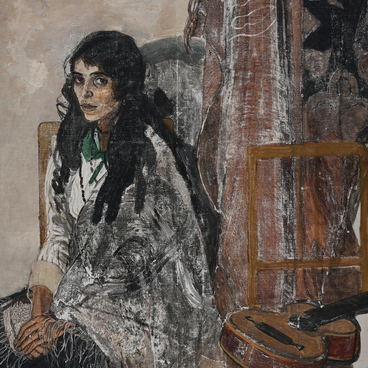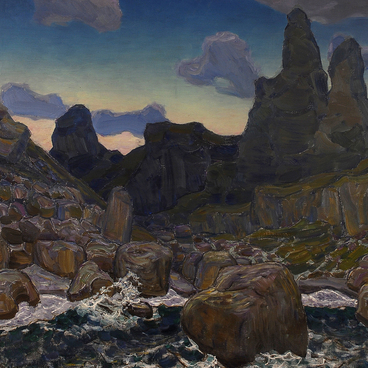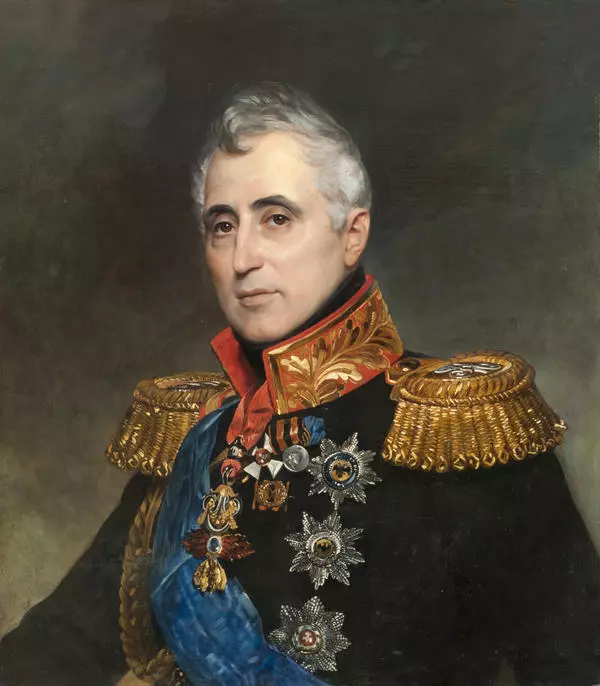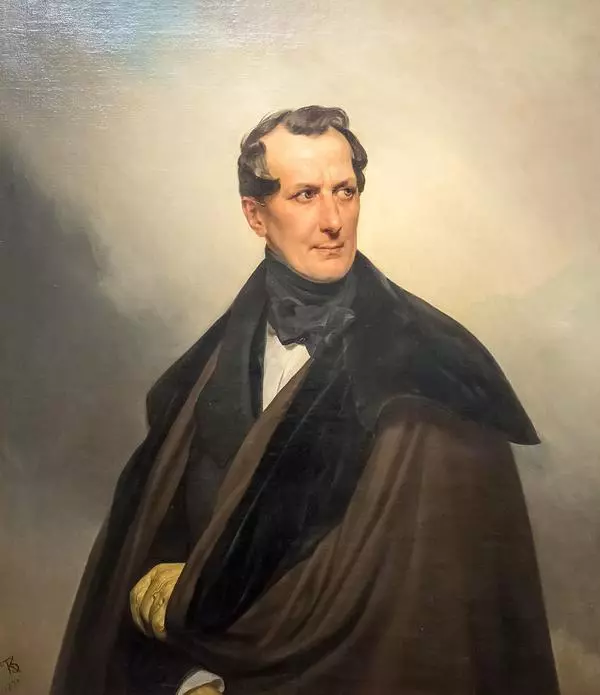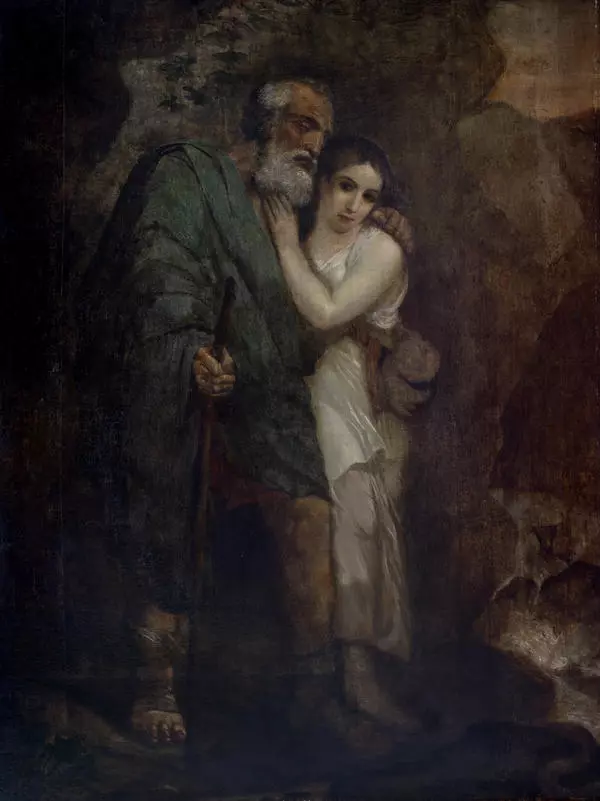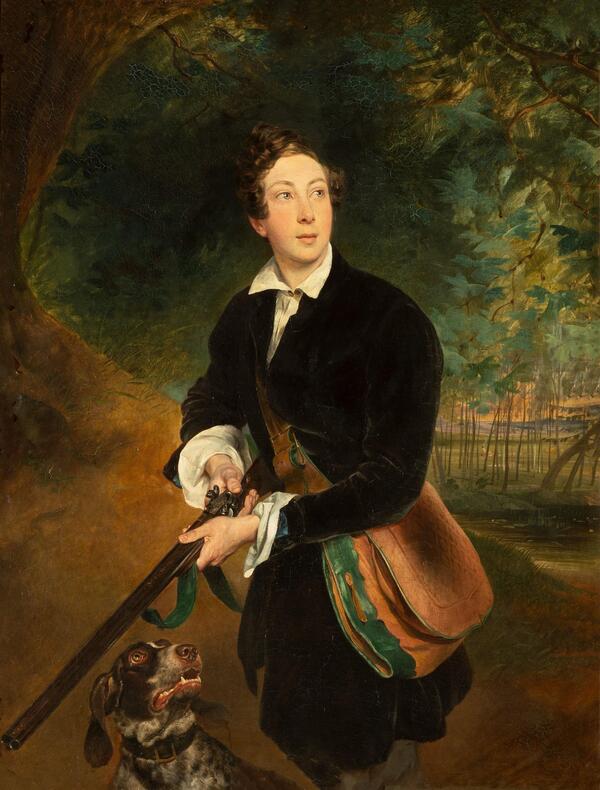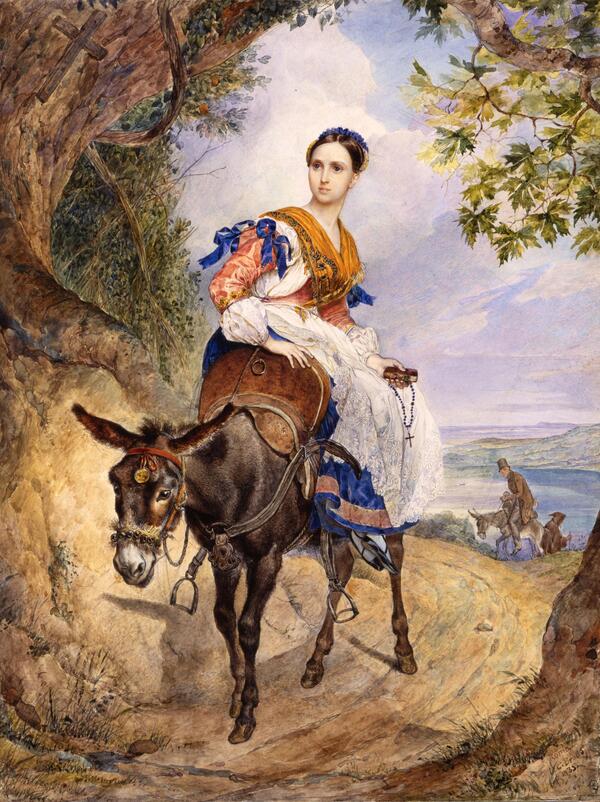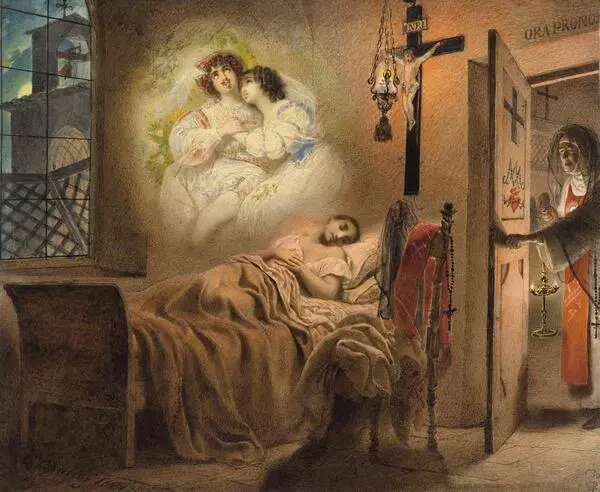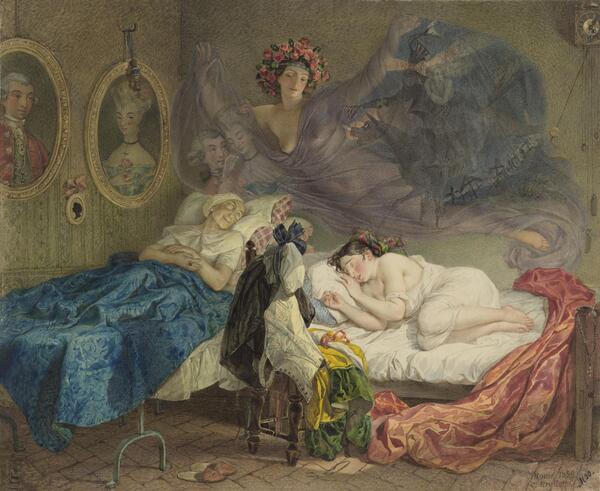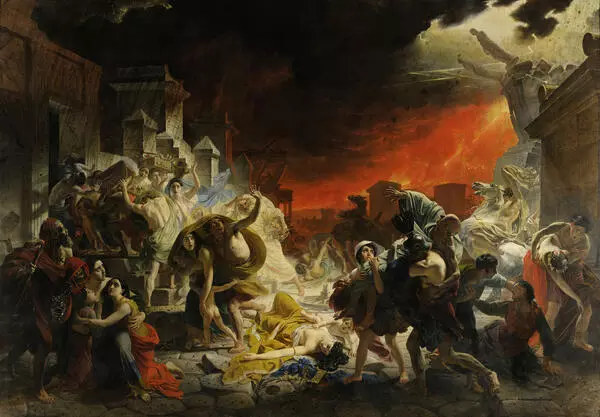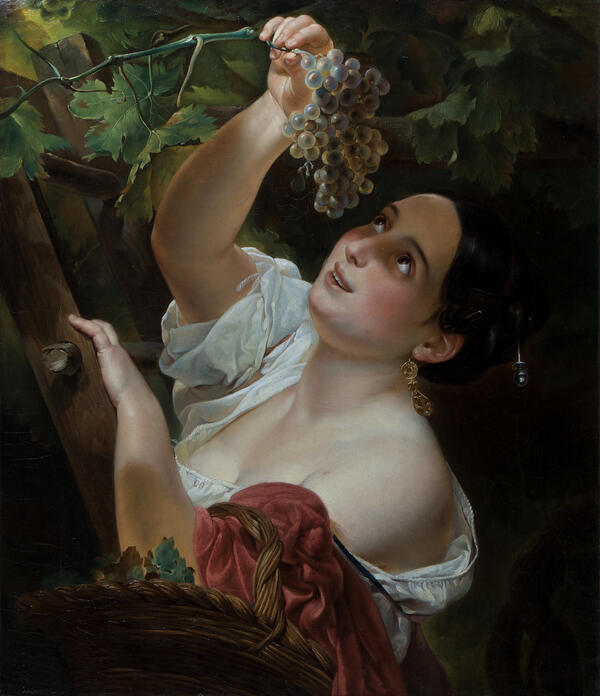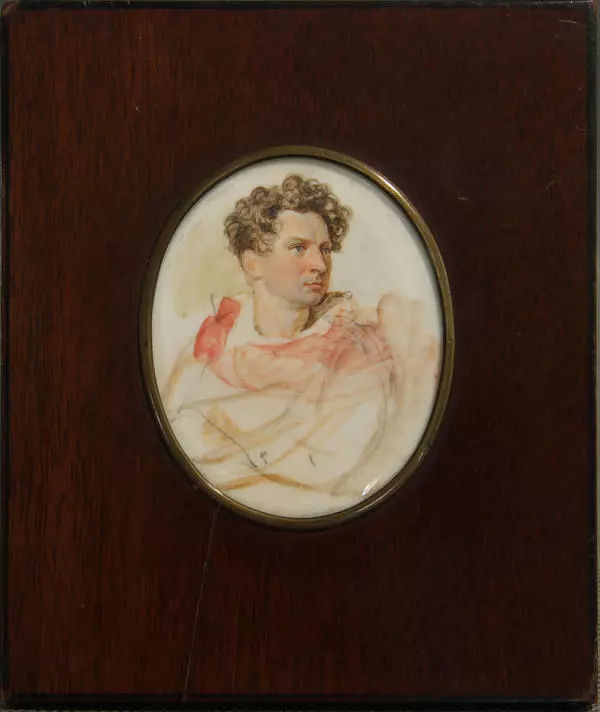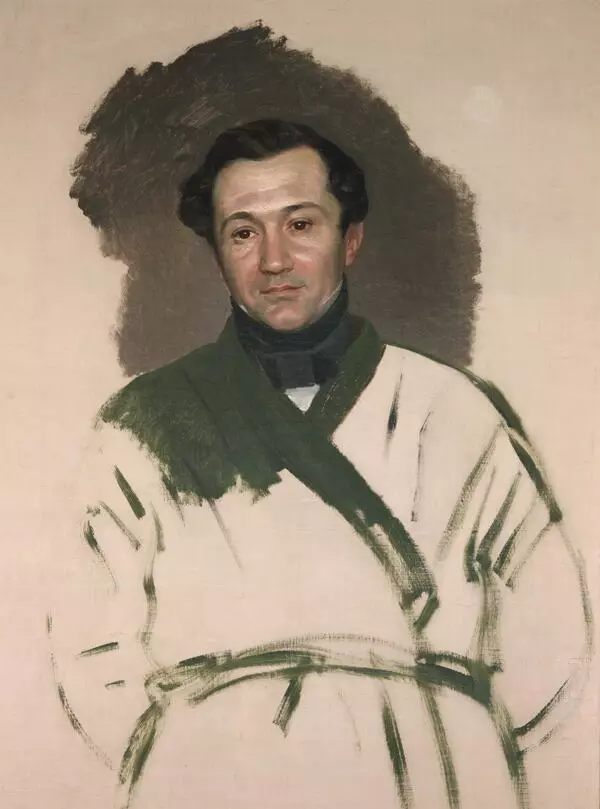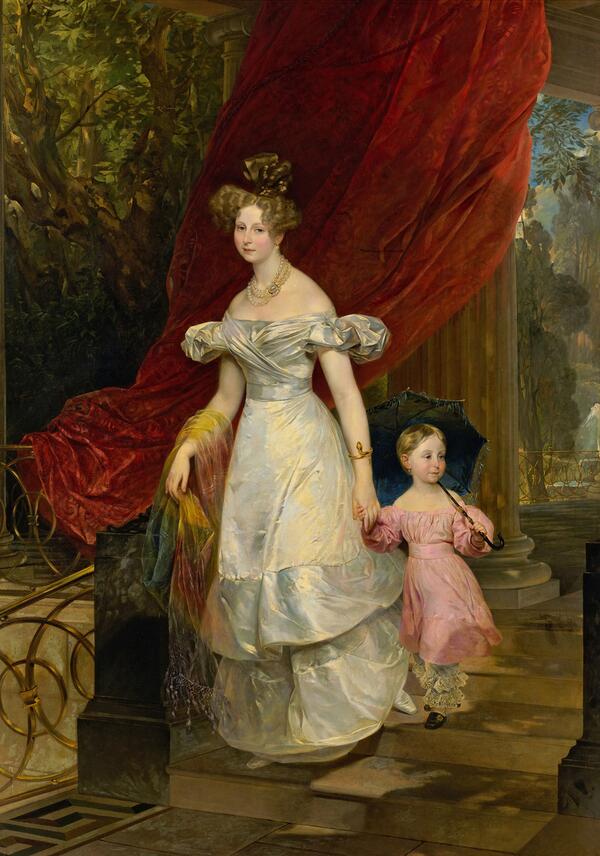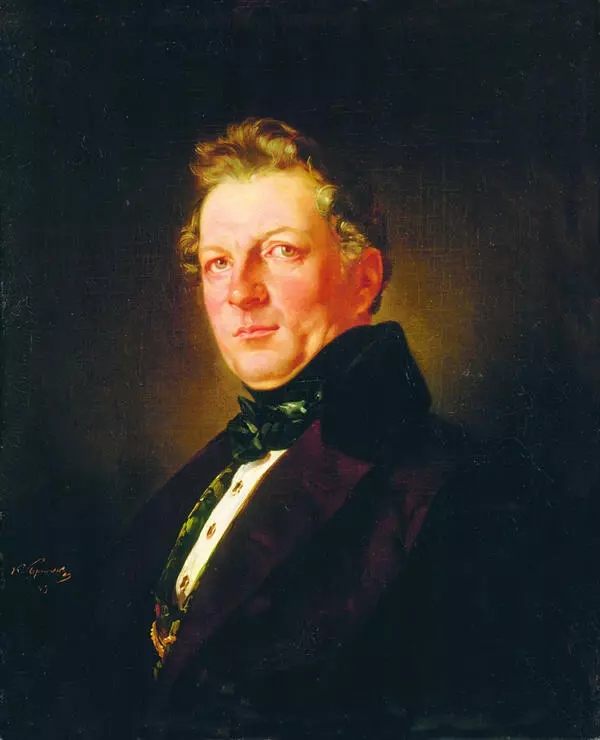NovosibIrsk State Art Museum exhibits three artworks by Karl BryullOv. “Eclipse of the Sun. DiAna”s Farewell to Apollo” is one of them. The artwork was inspired by a real event that took place on July 16, 1851. The artist was fascinated by the event so much he decided to dedicate a painting to it. He created a number of oil sketches and several dozens of compositional sketches.
In a letter to the editor of “OtEchestvennye ZapIski” (literally: Homeland Notes) literary magazine dated July 31, 1852, art critic Vladimir StAsov said that Bryullov’s ‘Eclipse of the Sun’ is an ‘an allegorical representation of last year”s solar eclipse. Apollo is all bright, like a dazzling sun, with a purple short cape on his shoulders, standing in the middle of a light circle, as in the glow, riding his golden chariot in the azure sky. Someone crossed his road jumping over his chariot. It is his pale languorous sister Diana — the moon, carried away in a fast flight by a pair of dark deer. Here, having met her brother on the fly, the sister hugged him by the neck and kissed him, and her body flying over the sun bent down to the lips of her fair brother, obscures the shining light for a moment. The fiery horses of the chariot, although they did not stop and still race like lightning bolts, bent their necks and heads to their legs, as if carrying a burden, their eyes look fierce under all this weight…’.
Bryullov had already resorted to depicting astronomical phenomena like deities of ancient mythology when preparing the sketches to decorate the PUlkovo observatory. For ‘Eclipse of the Sun, ’ the artist picked a myth that claimed the victory of darkness over light and death over life in an allegorical form.
The artist’s contemporaries called him the Great Karl during his lifetime. Many were amazed by the brilliant skill of Karl Bryullov. Gogol wrote: “He is the first to create artworks that can be understood (though in a different way) by both an artist with a fine taste and a person who has no idea what art is. His artworks are the first to have an enviable fate of becoming famous all over the world. “The Last Day of Pompeii” remains the pinnacle of his work. Bryullov’s human is here to demonstrate the beauty, the superior elegance of one’s own nature. Feelings and passions, genuine and fiery, are depicted in a representation so beautiful, a human so beautiful, that you cannot get enough of it.’
In a letter to the editor of “OtEchestvennye ZapIski” (literally: Homeland Notes) literary magazine dated July 31, 1852, art critic Vladimir StAsov said that Bryullov’s ‘Eclipse of the Sun’ is an ‘an allegorical representation of last year”s solar eclipse. Apollo is all bright, like a dazzling sun, with a purple short cape on his shoulders, standing in the middle of a light circle, as in the glow, riding his golden chariot in the azure sky. Someone crossed his road jumping over his chariot. It is his pale languorous sister Diana — the moon, carried away in a fast flight by a pair of dark deer. Here, having met her brother on the fly, the sister hugged him by the neck and kissed him, and her body flying over the sun bent down to the lips of her fair brother, obscures the shining light for a moment. The fiery horses of the chariot, although they did not stop and still race like lightning bolts, bent their necks and heads to their legs, as if carrying a burden, their eyes look fierce under all this weight…’.
Bryullov had already resorted to depicting astronomical phenomena like deities of ancient mythology when preparing the sketches to decorate the PUlkovo observatory. For ‘Eclipse of the Sun, ’ the artist picked a myth that claimed the victory of darkness over light and death over life in an allegorical form.
The artist’s contemporaries called him the Great Karl during his lifetime. Many were amazed by the brilliant skill of Karl Bryullov. Gogol wrote: “He is the first to create artworks that can be understood (though in a different way) by both an artist with a fine taste and a person who has no idea what art is. His artworks are the first to have an enviable fate of becoming famous all over the world. “The Last Day of Pompeii” remains the pinnacle of his work. Bryullov’s human is here to demonstrate the beauty, the superior elegance of one’s own nature. Feelings and passions, genuine and fiery, are depicted in a representation so beautiful, a human so beautiful, that you cannot get enough of it.’
